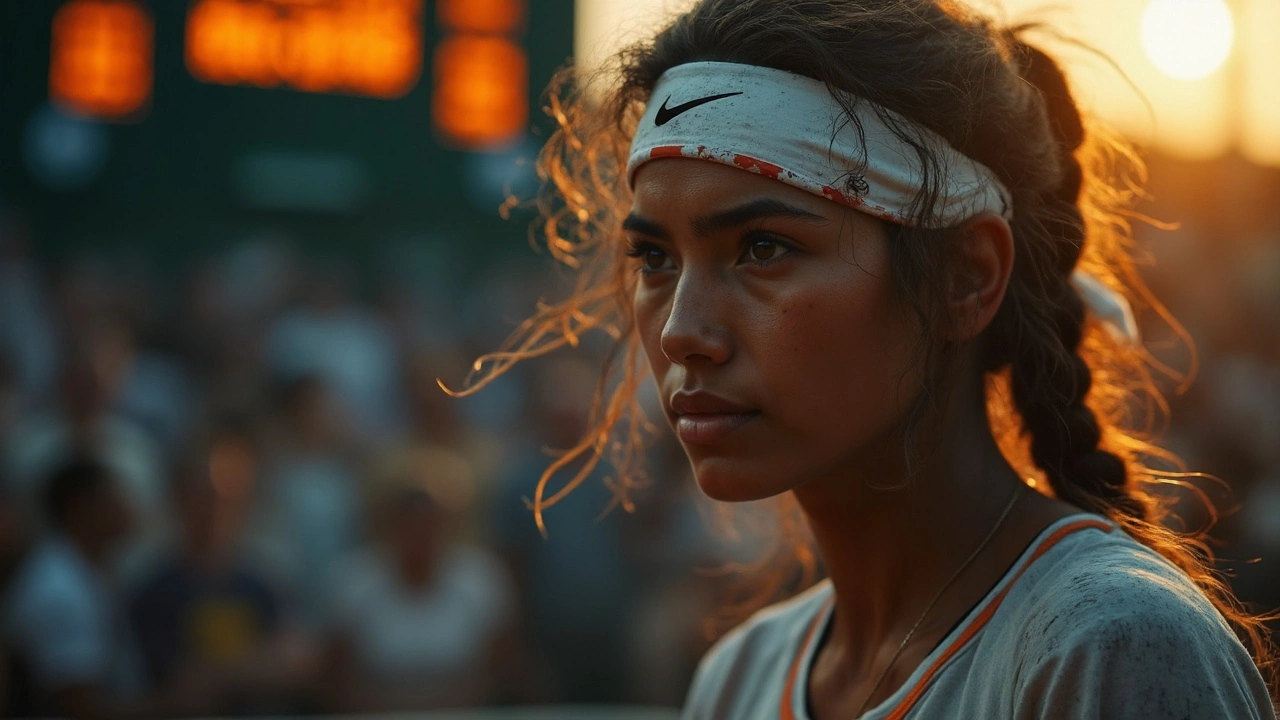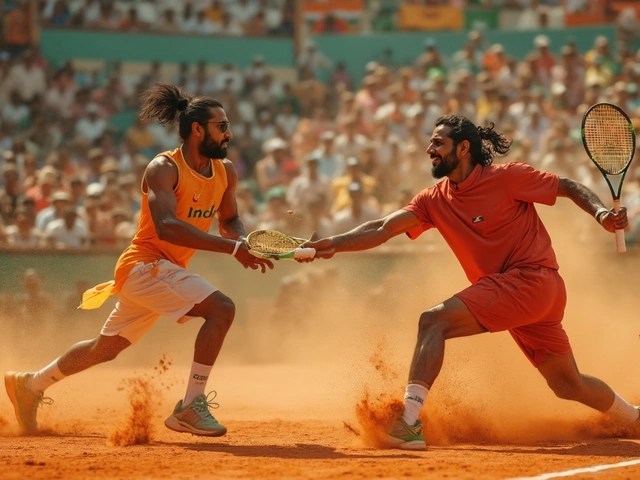Some moments in tennis don’t just test a player’s technique—they test pure human grit. If you thought rallies at Wimbledon or Roland Garros can get intense, you haven’t heard about the match where two players pushed each other into the realms of the absurd. Imagine hitting the ball back and forth not for a minute, but so long your arm aches just reading about it. The story of the longest tennis point brings us to a jaw-dropping feat that doesn’t show up in highlight reels and feels almost unreal.
The Match That Made Tennis History: The Longest Rally Ever Recorded
The record for the longest tennis point isn’t an urban legend. It happened during a special type of match: not on the main ATP or WTA tour, but in a challenge that was basically all about seeing how long two people could go without dropping the ball. On February 24, 1984, Vicki Nelson and Jean Hepner stepped onto court in Richmond, Virginia, for the first round of the Virginia Slims tournament. This wasn’t a prime-time slot. There were no sold-out crowds in the stands, but what happened during that match is now etched in the sport’s folklore.
What exactly did these two do? In one surreal point, Nelson and Hepner played a rally that lasted 29 minutes. That's not a typo. 29 breathtaking minutes, with the ball crossing the net a staggering 643 times. Just for comparison: even the most dramatic points at Grand Slam finals rarely cross more than 50 shots and don’t last more than a couple of minutes. Just for context, here’s how that point stacks up next to your average baseline exchange at the pro level. Most points in professional tennis are around 4-6 shots, and even long rallies typically max out around 20-30. A 643-shot point is way outside the norm.
The rally took place in a third-set tiebreaker, adding to the intensity. Imagine you’re already hours into a battle, then suddenly one point stretches on for what feels like forever. No matter how much tennis you’ve watched, you haven’t seen a point like that. Nelson eventually won the point, and later, the match—6–4, 7–6 (11–9). Both were forever changed. Neither could lift their arms comfortably the next day, and Nelson famously said her hand was shaking she could hardly sign the scorecard.
| Players | Shots | Duration | Date | Match Result |
|---|---|---|---|---|
| Vicki Nelson vs. Jean Hepner | 643 | 29 min | February 24, 1984 | Nelson def. Hepner (6–4, 7–6) |
Here’s what’s wild: It was a slow, cautious exchange. Both players just wanted to avoid making a mistake, so neither tried to finish the point. There’s even an interview with Nelson, where she said, “We were waiting for each other to miss,” and that every time she tried to run around her forehand or do something different, her body started to cramp. Human limits, right there on court.
This record-breaking point was so rare, officials have never seen anything like it since. Modern rackets, faster courts, and more aggressive tactics mean you probably won’t see anything remotely close at today’s pro events. Even the longest men’s rally on the ATP Tour, between Gilles Simon and Gaël Monfils at the 2013 French Open, lasted only 71 shots. And Novak Djokovic’s famous ironman point against Rafael Nadal in the 2013 Australian Open Final (the match itself lasted almost six hours) still can’t touch what Nelson and Hepner pulled off.

Longest Points and Rallies: From Brutal Endurance to Crazy Records
After hearing about the Nelson-Hepner marathon, you might wonder: what are some other moments where tennis pushed the limits of endurance? While their 643-shot rally is in a league of its own, tennis history has plenty of other mind-boggling stats for fans who love this stuff. Take a look at Nicolas Mahut and John Isner at Wimbledon 2010—this is the match many people think of when they hear “longest ever.” That five-set epic went on for 11 hours and 5 minutes over three days. While the points weren’t individually record-breaking, the sheer accumulation was unreal. Their fifth set alone had 138 games!
But back to points and rallies: in the men’s game on the ATP Tour, the previously mentioned Simon vs. Monfils exchange (71 shots, 2013 French Open) is among the longest shown on the main stage. In women’s pro tennis post-1984, you’ll find memorable sequences too. In a 1985 match, Angélica Gavaldón and Tarabini went 450 shots during a tournament in Mexico. Amateur and exhibition matches have seen even higher numbers, but most aren’t played under tournament pressure with ranking points at stake.
You might have seen viral videos of kids or even YouTubers trying to break these records for fun, with some managing over 50 minutes or even 1000 shots, but these aren’t in a professional setting. There’s a difference—adrenaline, prize money, the mental stress of competition, and sometimes even the distraction of crowds and cameras. It’s not just about how long you can keep the ball in play; it’s about surviving the moment.
Surprisingly, there’s no official Guinness World Record category for the “longest rally in a professional match” because keeping accurate records for every match at every level is so tough, but the Nelson-Hepner mark is widely recognized by tennis officials, journalists, and hardcore fans as the one to beat.
| Record Type | Players | Shots | Event | Year |
|---|---|---|---|---|
| Longest Pro Rally | Vicki Nelson vs. Jean Hepner | 643 | Virginia Slims | 1984 |
| Longest ATP Tour Rally | Gilles Simon vs. Gaël Monfils | 71 | French Open | 2013 |
| Longest Women’s Pro Rally (Post-1984) | Gavaldón vs. Tarabini | 450 | Mexico | 1985 |
The story behind these legendary points? Simple: survival and not blinking first. Players tense up, shoulders start to ache, legs go rubbery. Nutritionists, trainers, and even sports psychologists have studied what happens to athletes in moments like these. They say it’s as much about the mind as the body: once fatigue sets in, your attention can drop for even a split second, and that's when mistakes creep in.
If you’re ever playing with friends and want a taste of what this feels like, set a timer for even five straight minutes of hitting without an error. Most club players won’t make it past 3-4 minutes before someone slips up. And remember: Nelson and Hepner weren’t just moonballing the whole time—they were under match pressure. That’s what makes their feat stand out even more. In the age of fitness trackers, nutrition plans, and power tennis, it’s kind of wild we haven’t seen anyone break their record in over 40 years.

Lessons from the Longest Points: Tennis Tips and Insights
The spirit behind the game’s longest rallies isn’t just about numbers. There’s a reason tennis fans and coaches love these stories; they say a lot about the very heart of the sport. What do we learn from them, and are there tips you can actually use in your own matches?
First, let’s talk about patience. If you rush, you’ll crack. The best defensive players on tour—think Novak Djokovic or Caroline Wozniacki—always have this calm vibe. They pick their moments. During a rally that starts to stretch, pros focus on recovery after every shot, stay low, and breathe evenly. That’s one thing you can steal for your own game: never let the length of a rally shake your nerves. The second you worry about how many shots you’ve played, you’ll probably miss the next ball.
Another tip: footwork beats pure power in long points. During that 29-minute battle in 1984, both Nelson and Hepner took tiny side steps with every shot, so they were always balanced. If you want to win longer rallies, focus more on getting your feet in place rather than blasting the ball. Use a strong, steady grip so your wrists don’t tire out, and keep your head still. Want an easy drill? Practice “mini tennis” close to the net, aiming for 50 shots with a partner, no matter the speed. This builds the same steady rhythm that pros rely on when points get brutal.
The mental side is just as important. Legendary coach Brad Gilbert said he used to count shots in his head for focus and to distract from nerves. You’d be shocked how many pros use little mental tricks to break up the stress. Some hum songs, others breathe in a set pattern. If you want to last longer in rallies, find a simple habit—count or talk to yourself in your head—but always keep your eyes fixed on the ball.
So what about the racket and strings? Believe it or not, both Nelson and Hepner played with wooden rackets in 1984. They were heavier and a lot less forgiving than the space-age models today’s pros use. If you want to boost your endurance on court, use a racket that isn’t too heavy, go for a string pattern that’s arm-friendly, and make sure your grip size fits you. Small tweaks in your gear help cut down on fatigue during those lung-busting duels.
For fans? Next time you watch a big match and see a 20 or 30-shot rally, know that you’re watching something rare. Players today are bigger, faster, and stronger, with points finished quickly at the net or with roaring groundstrokes. Those marathon rallies from the ‘80s just don’t happen as much. Coaches now train players to attack first chance they get, so the art of the super-long rally is almost lost. But every once in a while, on a slow clay court, two baseliners might hang in for dozens of shots, offering us a rare throwback to the Nelson-Hepner days.
If you want to set your own record, take the lesson from these pros: get ready for a test of nerves as much as skill. Bring water, keep your body loose, and, most of all, keep your mind relaxed. You may never reach 643 shots, but who knows? Next time you’re let into your local courts in Mumbai—or wherever in the world—you might just surprise yourself.

